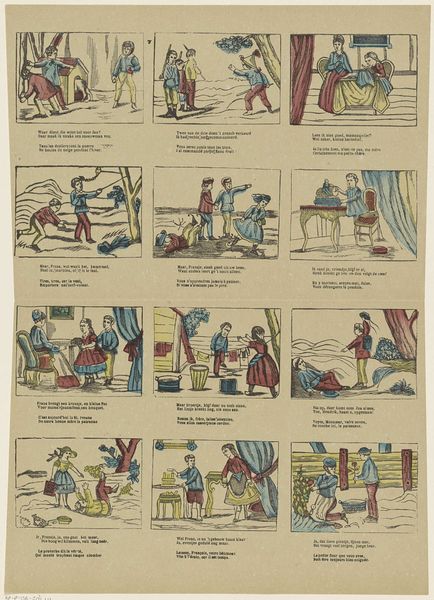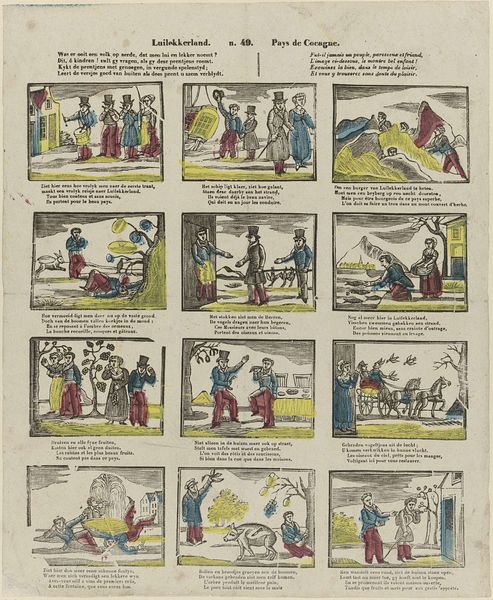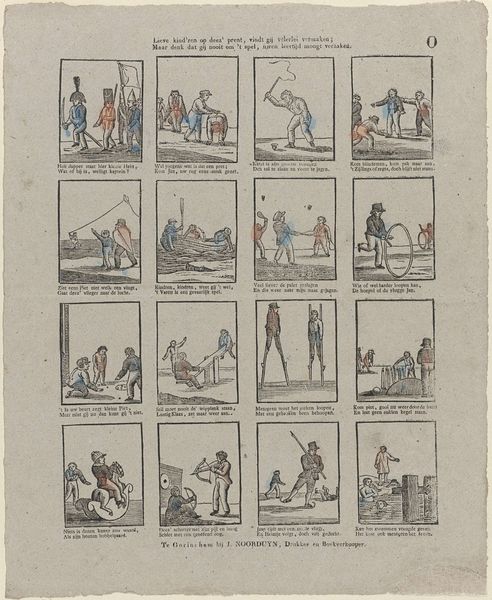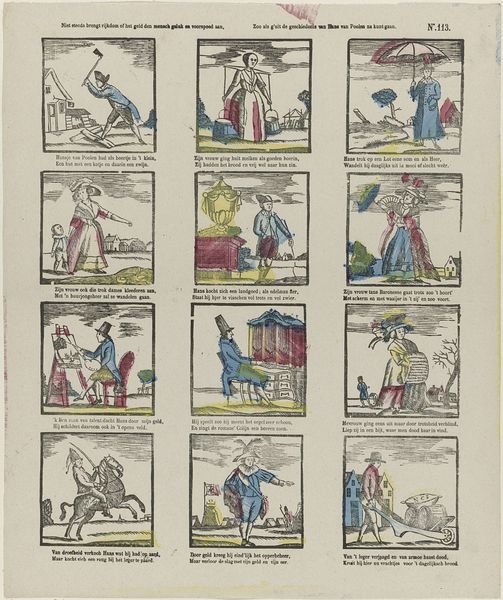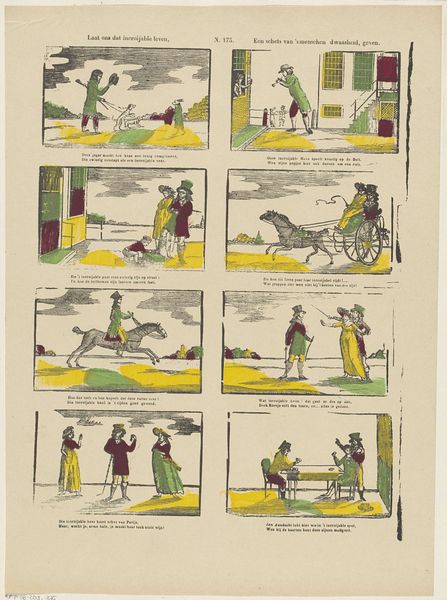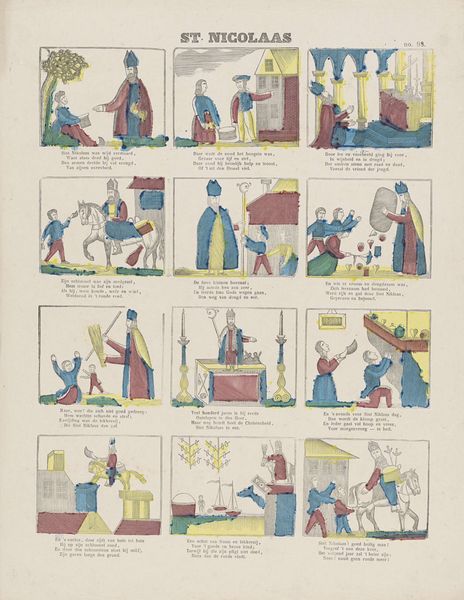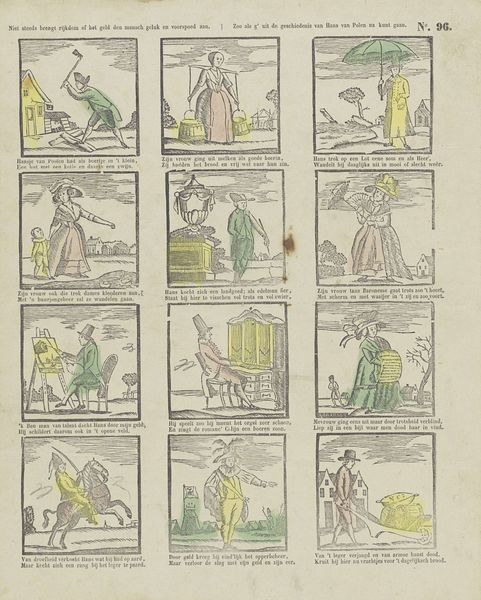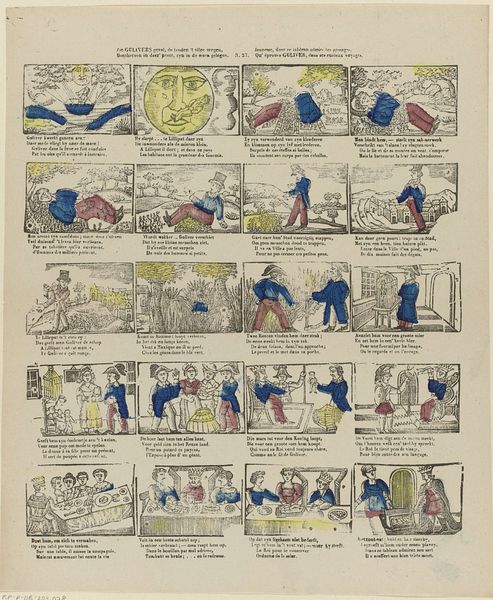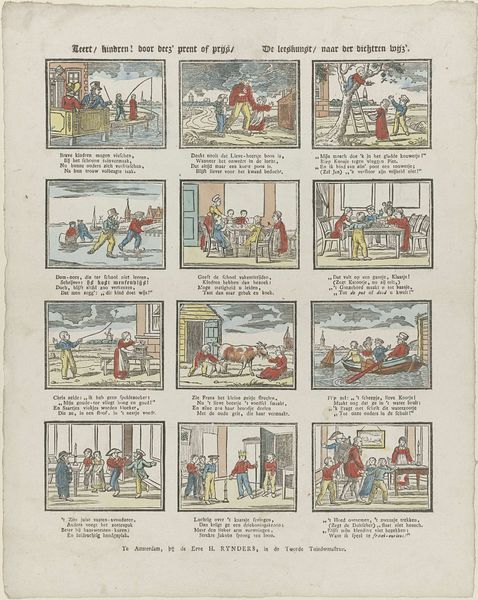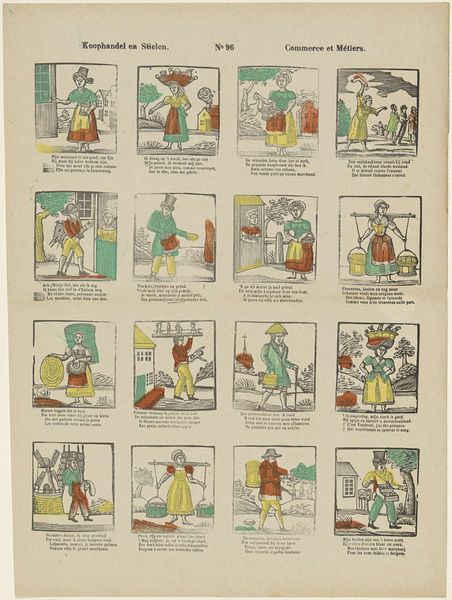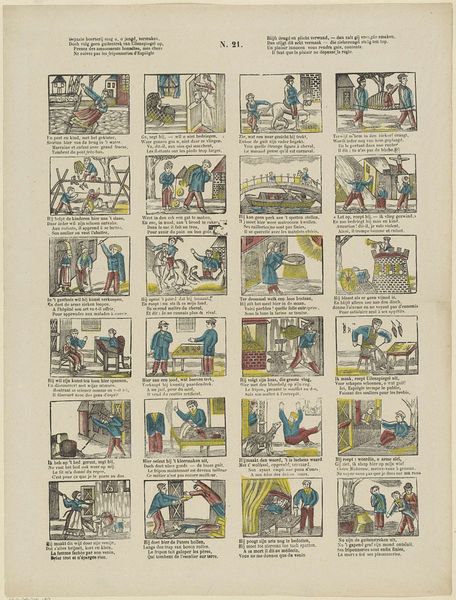
Ziet, kindren hoe men in de jeugd, / Al spelende kan zijn verheugd; / Wilt immer braaf uw pligt betrachten / Dan hebt gij vreugd en heil te wachten 1856 - 1900
0:00
0:00
graphic-art, print
#
graphic-art
#
narrative-art
#
comic strip
# print
#
comic
#
genre-painting
Dimensions: height 394 mm, width 322 mm
Copyright: Rijks Museum: Open Domain
Glenisson & Zonen created this print with etching and engraving, showing children at play. The rhymes above each scene suggest that youthful joy and virtue go hand in hand. It’s a moral lesson, but also an illustration of the social expectations placed on children in the Netherlands. Prints like this one circulated widely and cheaply. They served an important function in shaping cultural norms and transmitting values. The Dutch Republic had a well-established tradition of using prints for education and moral instruction, reflecting a society that valued literacy and self-improvement. The scenes of play, though seemingly innocent, are laden with social meaning. They encourage children to internalize values like obedience and diligence, preparing them for their future roles in society. To understand such images, historians explore archives, libraries and museums for similar examples, studying the social conditions that gave rise to them. We consider the institutions of family, school, and church, reflecting on how the meaning of art is always contingent on its context.
Comments
No comments
Be the first to comment and join the conversation on the ultimate creative platform.
